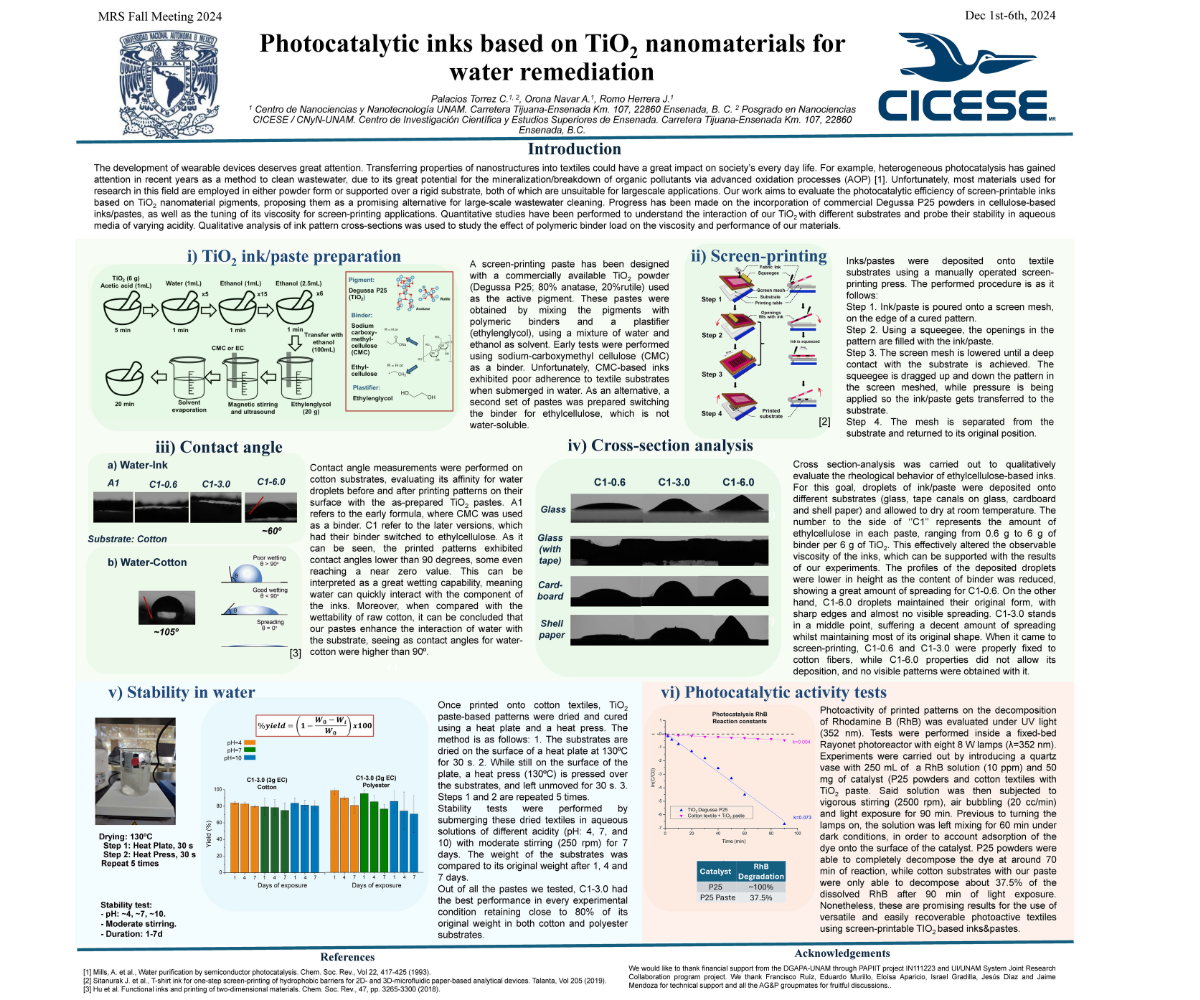
Wearable devices are a current reality and its development deserves great attention. Transferring the properties of nanostructures into textiles could have a great impact on society’s everyday life. Moreover, heterogeneous photocatalysis has gained attention in recent years as a method to clean water, due to its great potential for the mineralization/breakdown of organic pollutants via advanced oxidation processes(AOP) [1]. Most materials used for research in this field are employed in either powder form or supported over a rigid substrate, both of which are unsuitable for large-scale applications. Our work aims to evaluate the photocatalytic efficiency of textiles printed with screen-printable inks based on TiO2 nanomaterial pigments, proposing them as a promising alternative for large-scale remediation of water bodies.
A screen-printing paste has been designed with a commercially available TiO2
powder (80% anatase; 20%rutile) used as the active pigment. A second set of TiO2
-based materials were obtained via the reduction of the commercial powders in presence of Al, following a procedure reported by Wang et al. [2]. These pastes were obtained by mixing the pigments with polymeric binders (cellulose-based) and a plastifier (ethylenglycol), using a mixture of water and ethanol as solvent. As-obtained pastes/inks were used to screen-print patterns onto different textile substrates. Angle-contact measurements of the different pastes were analyzed to explore their wettability properties, while microscopic profiles of the cross-section of the dried patterns allowed to monitor and optimize their viscosity.
The TiO2-based inks exhibited good viscosity for screen-printing onto cotton and glass fiber substrates. The adherence and physical stability of the printed patterns has been evaluated.
Photocatalytic tests were performed via the degradation of a dye under various light conditions in presence of the screen-printed textiles and compared to the pigments in their powder form as reference. This result should be important data to evaluate the performance at a laboratory level for the use of TiO2-based inks in large-scale water remediation.
[1] Mills, A., Davies, R., Worsley, D., Water purification by semiconductor photocatalysis. Chem. Soc. Rev., Vol22, 417-425 (1993).
[2] Wang et al. Visible-light photocatalytic, solar thermal and photoelectrochemical properties of aluminium-reduced black titania. Energy and Environmental Science, 6(10), pp. 3007–3014 (2013).
Our project goals align with the principles of Green Chemistry and Sustainability, searching for an eco-friendly and easily scalable solution to water pollution. Efforts have been made to produce a photocatalytic ink based on TiO2 nanomaterials and cellulose-based binders. The fabrication of such inks requires only the use of water and ethanol as solvents, which are mostly harmless for the environment when handled properly.
On the other hand, we must ensure our inks can fulfill their purpose consistently over time and in a wide range of environments. I want to learn about the potential of green chemistry to create materials that can decompose harmful substances without posing a threat to nature during their production or deployment.